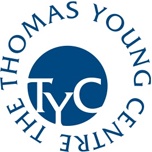History (and future) of modelling materials using interatomic potentials
21 September 2022 @ 2:00 pm – 4:00 pm
Zoom: https://ucl.zoom.us/j/93479659789
Interatomic Potentials and modelling as a tool in materials science – Prof Sir Richard Catlow, Dept. of Chemistry, UCL; School of Chemistry, Cardiff University; UK Catalysis Hub, Research Complex at Harwell, UK
Interatomic potential models have played and continue to play a crucial role in in the application of simulation techniques to simulating and predicting the properties of complex real materials. We will review the development of the field and current trends, including the growth of hybrid QM/MM and of ML based methods. We will show. how the use of modelling techniques especially in conjunction with a range of experimental methods can yield unique information on structures, dynamics, and mechanism in a range of functional inorganic materials. Our discussion will concentrate on the following topics and systems
We will discuss the prospects of the field in the light of developments in computer hardware, methodologies and algorithms.
Interatomic potentials: Basic historical developments, with the Natural Intelligence of our brilliant predecessors – Prof Olivier Hardouin Duparc, Institut Polytechnique de Paris
Abstract: If one cannot use Schrödinger, let alone Dirac, for large sets of atoms, one uses interatomic potentials. Interatomic potentials have been proposed ever since scientists know atoms exist and tend to gather, without collapsing together. Attraction and repulsion, first by pairs but also via many-body interactions when some electrons can be exchanged between atoms: I will propose a historical-pedagogical development of these ideas, mainly focused on metals but not only (also semiconductors).
Interatomic potentials for modelling the intermolecular forces between organic molecules, pharmaceuticals and biomolecules – Prof Sally Price, UCL
Abstract: An accurate intermolecular potential should be able to predict all physical properties of a molecule in the solid, liquid and gas. This was achieved for argon about half a century ago, but it is arguable whether it has yet been achieved for water, and certainly not in a form that can be used in standard molecular dynamics codes. For organic molecules, the intermolecular potential is expressed in an atom-atom form. However, the non-sphericity of atoms in molecules, non-additive effects, limited transferability and molecular flexibility may all limit the accuracy of atomistic modelling of the organic solid state for specific molecules, such as pharmaceuticals.
21 September 2022 @ 2:00 pm – 4:00 pm
Zoom: https://ucl.zoom.us/j/93479659789
Interatomic Potentials and modelling as a tool in materials science – Prof Sir Richard Catlow, Dept. of Chemistry, UCL; School of Chemistry, Cardiff University; UK Catalysis Hub, Research Complex at Harwell, UK
Interatomic potential models have played and continue to play a crucial role in in the application of simulation techniques to simulating and predicting the properties of complex real materials. We will review the development of the field and current trends, including the growth of hybrid QM/MM and of ML based methods. We will show. how the use of modelling techniques especially in conjunction with a range of experimental methods can yield unique information on structures, dynamics, and mechanism in a range of functional inorganic materials. Our discussion will concentrate on the following topics and systems
- Structure modelling and prediction of inorganic materials;
- Modelling of the structures and properties of oxide surfaces;
- Modelling of defects in inorganic materials;
- Modelling of nano-particles;
- Modelling of active site structures and mechanisms of catalytic reactions.
We will discuss the prospects of the field in the light of developments in computer hardware, methodologies and algorithms.
Interatomic potentials: Basic historical developments, with the Natural Intelligence of our brilliant predecessors – Prof Olivier Hardouin Duparc, Institut Polytechnique de Paris
Abstract: If one cannot use Schrödinger, let alone Dirac, for large sets of atoms, one uses interatomic potentials. Interatomic potentials have been proposed ever since scientists know atoms exist and tend to gather, without collapsing together. Attraction and repulsion, first by pairs but also via many-body interactions when some electrons can be exchanged between atoms: I will propose a historical-pedagogical development of these ideas, mainly focused on metals but not only (also semiconductors).
Interatomic potentials for modelling the intermolecular forces between organic molecules, pharmaceuticals and biomolecules – Prof Sally Price, UCL
Abstract: An accurate intermolecular potential should be able to predict all physical properties of a molecule in the solid, liquid and gas. This was achieved for argon about half a century ago, but it is arguable whether it has yet been achieved for water, and certainly not in a form that can be used in standard molecular dynamics codes. For organic molecules, the intermolecular potential is expressed in an atom-atom form. However, the non-sphericity of atoms in molecules, non-additive effects, limited transferability and molecular flexibility may all limit the accuracy of atomistic modelling of the organic solid state for specific molecules, such as pharmaceuticals.










